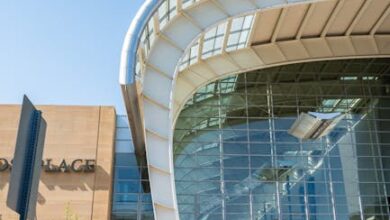Rising AI Demands Push Asia Pacific Data Centres to Adapt, Says Vertiv

Rising AI Demands Push Asia Pacific Data Centres to Adapt, Says Vertiv
Estimated reading time: 6 minutes
- AI’s rapid growth is transforming Asia Pacific data centres: Traditional infrastructure is insufficient for the intense power and cooling needs of modern AI, necessitating fundamental shifts in design.
- “AI Factory” data centres are emerging: Purpose-built facilities featuring advanced hybrid cooling (liquid + air), higher-voltage DC power, and integrated designs are becoming standard.
- Sustainability is paramount: Operators are integrating alternative energy sources, energy storage, and highly efficient cooling to meet ESG goals and manage grid constraints.
- Modular and prefabricated solutions offer agility: These systems enable faster deployment, incremental capacity expansion, and reduced capital expenditure, crucial for dynamic AI growth in challenging regions.
- Strategic planning is vital for future readiness: A holistic approach combining advanced infrastructure, sustainable practices, and scalable designs is essential for supporting the next era of computing.
- The AI Explosion and Unprecedented Demands on Infrastructure
- Overcoming the Twin Hurdles: Power and Cooling
- The Dawn of the “AI Factory” Data Centre
- Sustainability and Strategic Power for AI’s Future
- Preparing for a Demanding Future
- FAQ: Frequently Asked Questions
The landscape of computing is undergoing a profound transformation, driven by the relentless ascent of artificial intelligence. Across the Asia Pacific region, this shift is particularly pronounced, placing unprecedented pressure on the very foundations of digital infrastructure: data centres.
“As more companies in Asia Pacific adopt artificial intelligence to boost their operations, the pressure on data centres is growing fast. Traditional facilities, built for earlier generations of computing, are struggling to keep up with the heavy energy use and cooling demands of modern AI systems. By 2030, GPU-driven workloads could push rack power densities toward 1 MW, making incremental upgrades no longer enough. Instead, operators are now turning toward purpose-built “AI factory” data centres that are designed from the ground up.” This stark reality underscores a critical turning point for the region’s digital future.
To understand the magnitude of this challenge and the innovative solutions emerging, AI News spoke with Paul Churchill, Vice President of Vertiv Asia. Churchill shed light on how Asia Pacific is not just preparing but actively redesigning its data centre ecosystem to support the next era of computing.
The AI Explosion and Unprecedented Demands on Infrastructure
The sheer scale of AI adoption is breathtaking. The global AI data-centre market, a burgeoning sector, is projected to surge from $236 billion in 2025 to nearly $934 billion by 2030. This exponential growth isn’t speculative; it’s fueled by the rapid integration of AI across vital industries such as finance, healthcare, and manufacturing. These sectors are increasingly reliant on high-performance computing environments, which, in turn, are powered by dense GPU clusters – systems that demand significantly more energy and cooling capacity than conventional servers.
In Asia Pacific, this demand is further amplified by a confluence of factors: ambitious government investments in digitalisation initiatives, the widespread expansion of 5G networks, and the enthusiastic rollout of cloud-native and generative AI applications. These developments are collectively pushing compute needs to levels previously unseen in the region.
Churchill emphasized that merely building larger facilities won’t suffice. The solution lies in developing smarter, more scalable, and sustainable infrastructure strategies. “Infrastructure leaders must move beyond piecemeal upgrades. A future-ready strategy involves adopting AI-optimised infrastructure that combines high-capacity power systems, advanced thermal management, and integrated, scalable designs,” he explained, highlighting the need for a holistic approach.
Overcoming the Twin Hurdles: Power and Cooling
As AI workloads become more intensive, rack densities are skyrocketing, evolving from typical levels of 40 kW to 130 kW, with projections reaching as high as 250 kW by 2030. This drastic increase renders traditional air cooling methods largely inadequate. The heat generated by advanced GPU arrays simply overwhelms conventional systems, risking performance degradation and equipment failure.
To tackle this, Vertiv is at the forefront of developing innovative hybrid cooling systems. These solutions integrate direct-to-chip liquid cooling with air-based methods, allowing systems to dynamically adjust to varying workloads, significantly reduce energy consumption, and maintain operational reliability. “Our coolant distribution units enable direct-to-chip liquid cooling while ensuring reliability and serviceability in high-density environments,” Churchill noted, underscoring the precision and efficiency these systems bring.
Power delivery presents another complex challenge. AI workloads are inherently dynamic, with rapid fluctuations that necessitate infrastructure capable of real-time responsiveness. Vertiv is addressing this by evolving its rack power distribution units (PDUs) and busway systems to handle higher voltages and improve load balancing. Intelligent monitoring solutions further empower operators to manage loads more efficiently, minimizing wasted capacity and extending uptime – a crucial consideration in parts of Southeast Asia where power grids can be less stable.
Actionable Step 1: Implement Advanced Hybrid Cooling Solutions
Transition from outdated air cooling to hybrid systems that combine direct-to-chip liquid cooling with intelligent air management. This approach is essential for efficiently managing extreme heat densities, ensuring optimal performance, and reducing the energy footprint of AI-driven infrastructure.
The Dawn of the “AI Factory” Data Centre
The emergence of liquid-cooled GPU pods and plans for 1 MW racks by industry giants like AMD and hyperscalers such as Microsoft, Google, and Meta, signifies a fundamental architectural shift. The era of merely retrofitting older facilities for AI is quickly fading. Instead, the focus is now on designing and building new data centres specifically optimized from the ground up to support the unique demands of AI.
“The future of data-centre architecture is hybrid, and these infrastructures require facilities to be built around liquid flow,” Churchill articulated. This vision encompasses entirely new floor layouts, sophisticated coolant distribution networks, and significantly more advanced power systems. The next generation of facilities will integrate cooling, power, and monitoring seamlessly, from the individual chip level all the way to the grid. For the Asia Pacific region, with its rapidly expanding hyperscale campuses, such integrated design is indispensable for meeting soaring performance expectations and ambitious sustainability goals.
By 2030, Asia Pacific is anticipated to surpass the US in data centre capacity, projected to reach nearly 24 GW of commissioned power. To effectively manage this colossal growth, enterprises are moving away from ad hoc upgrades towards adopting full-stack AI factory data centres. Churchill suggests this transition should occur in strategic stages. The initial phase involves integrated planning, bringing together power, cooling, and IT management as interconnected systems rather than separate entities. This approach streamlines deployment and provides a robust foundation for future scalability.
Actionable Step 2: Embrace Modular and Prefabricated AI-Ready Infrastructure
Adopt modular and prefabricated systems to facilitate phased capacity expansion without disruptive overhauls. This strategy allows companies to deploy factory-tested modules alongside existing infrastructure, gradually migrating workloads to AI-ready capacity. This significantly reduces deployment times and upfront capital expenditure, especially beneficial for dynamic AI growth.
A prime example of this strategy in action can be seen in a rapidly expanding e-commerce company operating across Southeast Asia. Facing unpredictable AI inference demands for personalized recommendations and fraud detection, this company utilized modular data centre units. By deploying these pre-configured, scalable modules, they could quickly add AI-specific compute capacity to their existing facilities in various countries, overcoming local challenges like limited land availability and quickly operationalizing their AI workloads without waiting years for traditional build-outs. This agility ensured they could capitalize on market opportunities and maintain competitive edge.
Sustainability and Strategic Power for AI’s Future
With AI driving a significant surge in energy consumption, data-centre operators are increasingly confronted with stringent regulations and escalating grid constraints. This challenge is particularly acute in Southeast Asia, where power reliability and tariffs can vary dramatically.
Vertiv is actively collaborating with operators to integrate alternative energy sources such as lithium-ion batteries, hybrid power systems, and microgrids. These solutions are pivotal in reducing dependence on often-strained national grids and enhancing operational resilience. There’s also growing interest in solar-backed UPS systems and advanced energy storage technologies, which play a crucial role in balancing loads and managing operating costs effectively.
Beyond alternative energy, cooling efficiency remains a paramount focus for sustainability. Hybrid liquid cooling systems, for instance, dramatically reduce both energy and water usage compared to older, less efficient methods. “Our focus is on delivering infrastructure that meets performance demands while aligning with ESG goals,” Churchill stated. “We’re collaborating with our partners to ensure that AI-driven growth in the region remains responsible, sustainable, and aligned with long-term digital and environmental objectives.”
A significant innovation in this realm is the renewed relevance of DC power for AI data centres. Vertiv recently introduced PowerDirect Rack, a DC power shelf specifically engineered for AI and high-performance computing. Switching to DC power can substantially cut energy losses by minimizing the number of conversion steps between the utility grid and the server. Furthermore, it aligns seamlessly with renewable energy sources and battery storage systems, both of which are gaining traction across Asia Pacific. This approach is particularly advantageous in energy-constrained markets like Vietnam and the Philippines, where flexible power solutions are essential for uninterrupted operations. As Churchill aptly put it, DC power is “not just an efficiency play – it is a strategy for enabling sustainable scalability.”
Actionable Step 3: Prioritize Sustainable Power and Energy Storage Solutions
Integrate lithium-ion energy storage, grid-interactive UPS systems, and higher-voltage DC power distribution to improve efficiency and resilience. Explore alternative energy sources and microgrids to reduce grid dependency, manage costs, and meet growing sustainability mandates.
Many emerging economies in Asia Pacific grapple with challenges like limited available land, an unstable power supply, and shortages of skilled labour. In these contexts, modular and prefabricated data-centre systems offer a highly practical and strategic solution. These factory-tested modules can drastically reduce deployment times, often by up to 50%, while simultaneously enhancing energy efficiency and scalability. They empower operators to expand capacity incrementally, adding resources precisely as needed without requiring substantial upfront capital investment. This inherent flexibility is especially valuable for AI workloads, which are characterized by rapid and often unpredictable growth.
Preparing for a Demanding Future
The relentless surge of AI is fundamentally reshaping the construction and operation of data centres across the Asia Pacific. As AI workloads intensify and environmental sustainability pressures mount, reliance on outdated infrastructure is no longer a viable option. The decisive move toward purpose-built “AI factory” data centres, powered by advanced cooling technologies, efficient DC power systems, and adaptable modular solutions, signifies a pivotal shift in how the region is proactively preparing for the next, highly demanding era of computing. Vertiv’s insights underscore that successful adaptation hinges on strategic planning, innovative technology adoption, and an unwavering commitment to both performance and environmental responsibility.
Want to learn more about AI and big data from industry leaders? Check out AI & Big Data Expo taking place in Amsterdam, California, and London. The comprehensive event is part of TechEx and co-located with other leading technology events. Click here for more information.
AI News is powered by TechForge Media. Explore other upcoming enterprise technology events and webinars here.
FAQ: Frequently Asked Questions
Q1: Why are traditional data centres struggling with AI demands in Asia Pacific?
A1: Traditional data centres were built for earlier generations of computing and are not equipped to handle the heavy energy consumption and cooling requirements of modern, GPU-driven AI systems. AI workloads can push rack power densities towards 1 MW, far exceeding the capabilities of conventional air-cooling and power delivery systems.
Q2: What innovative solutions are being adopted to meet AI’s power and cooling challenges?
A2: Data centres are adopting advanced hybrid cooling systems, which integrate direct-to-chip liquid cooling with air-based methods. For power, they are evolving rack power distribution units (PDUs) and busway systems to handle higher voltages, improve load balancing, and implementing intelligent monitoring. The renewed focus on DC power is also crucial for efficiency and integration with renewable sources.
Q3: What defines an “AI factory” data centre?
A3: An “AI factory” data centre is a purpose-built facility designed from the ground up to support the unique and intense demands of AI workloads. These centres feature advanced liquid cooling infrastructure, sophisticated coolant distribution networks, higher-capacity power systems, and integrated monitoring from chip to grid, moving beyond retrofitting older facilities.
Q4: How does sustainability factor into the evolution of AI data centres in Asia Pacific?
A4: Sustainability is a key focus due to increased energy consumption and environmental regulations. Data centres are integrating alternative energy sources like lithium-ion batteries, hybrid power systems, and microgrids. Cooling efficiency, particularly with hybrid liquid cooling, dramatically reduces energy and water usage, aligning performance demands with ESG goals.
Q5: What role do modular and prefabricated data centres play in Asia Pacific’s AI growth?
A5: Modular and prefabricated data centres offer practical solutions for regions with limited land, unstable power, and skilled labor shortages. These factory-tested units reduce deployment times significantly, enhance energy efficiency, and allow for incremental capacity expansion, which is ideal for the rapid and unpredictable growth of AI workloads without large upfront investments.





